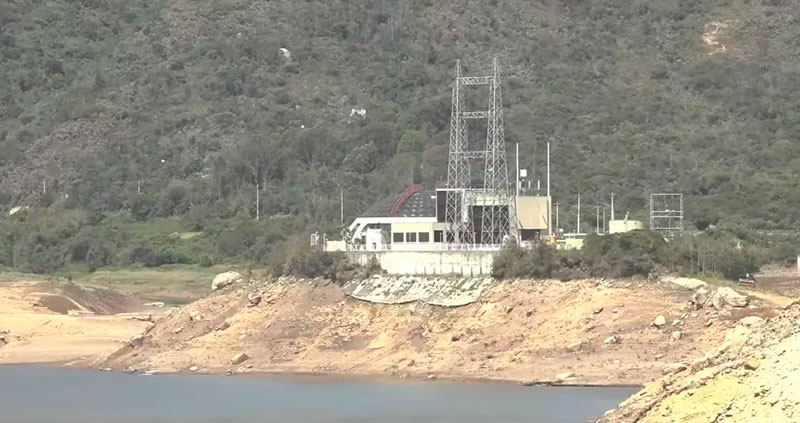According to recent weather predictions, made by renowned meteorologist Max Henríquez, rainfall is expected to begin in the Chingaza region in the coming days, providing relief to the alarming situation of the reservoirs that supply water to Bogotá.
This phenomenon is anticipated after a long period of dry weather exacerbated by the El Niño phenomenon, which has contributed to a notable decrease in available water levels.
The intense summer caused by the climate phenomenon significantly affected the aquatic reserves of the Colombian capital, which led the District to implement rationing measures to conserve this vital resource.
This critical situation underscores the urgent need for precipitation that can reverse the decline in water volumes. Max Henríquez Daza, meteorologist and environmental communicator, indicated that changes in wind patterns over the Eastern mountain range could catalyze the long-awaited rains over Chingaza, marking a turning point since December.
“For the first time since December there are winds reaching perpendicularly to the eastern mountain range. “This indicates that it will soon start raining in Chingaza,” the meteorologist posted on his X account.
Additional factors, such as thermal anomalies in the Atlantic Ocean, have also played a role in the lack of rainfall, intensifying the current situation.
The Government maintains the hope that with the arrival of La Niña and the subsequent rains in the middle of the year, a recovery will be seen in the reservoirs of the Andean region. Current conditions underscore the importance of proper water management and response to changing weather patterns to ensure long-term water supplies.
What are the chances of rain in Bogotá and in the reservoirs that supply it with water?
Experts announced that on Wednesday, April 17, there is a possibility of rainfall in Bogotá towards sunset, which could provide partial relief to the growing concern about the level of the reservoirs that supply water to the city. The rainy season for the Colombian capital could begin earlier than expected, bringing hopes of mitigating the rationing measures in force due to the drop in the level of the Chingaza system.
The District Institute for Risk Management and Climate Change (Idiger) described the weather condition for Wednesday morning as predominantly dry, although with varied cloud cover over the region.
However, the Institute of Hydrology, Meteorology and Environmental Studies (Ideam) predicted the start of the rainy season towards the end of the month, highlighting that the first significant rains could occur right on this day. This meteorological change is crucial to counteract the effects of the drought that has led to water rationing in the city.
Bogotá’s water situation is at a critical moment, with the city anxiously awaiting the start of rainfall that could help recover optimal levels in the reservoirs. The possibility of rain represents a light of hope amid efforts to conserve every drop of water.
While Ideam’s predictions suggest a change in the weather pattern towards the end of April, any precipitation before this date would be welcome to relieve pressure on the capital’s water resources.
Global warming and Atlantic anomalies, causes of extensive drought
The low rainfall recorded in the last period in the country is due to the prolongation of the El Niño phenomenon, as explained by the Minister of the Environment, Susana Muhamad, during a press conference.
Although a decrease in this climatic phenomenon was anticipated in April, various “circumstances” have postponed the start of the rainy season, extending the effects of El Niño. Ghisliane Echeverry Prieto, director of Ideam, identified among these causes the decrease in winds due to a thermal anomaly in the Atlantic Ocean, in addition to an excess of energy, probably linked to global warming of the oceans.
Echeverry Prieto offered more encouraging perspectives for the near future, indicating that conditions are changing and the rainy season is expected to begin to manifest with greater intensity. According to the forecasts, a wetter period should begin from Wednesday, April 17. This announcement comes as a relief after a prolonged period of dry conditions that have affected various regions.
The explanations offered by Muhamad and Echeverry highlighted the complex interactions between global and regional climate phenomena, such as El Niño, and their impacts on local weather patterns. These situations, exacerbated by factors such as warming oceans, highlight the challenges meteorologists face in accurately predicting rainy seasons.
The information provided aims to prepare communities and sectors affected by these climate variations, allowing them to adopt appropriate measures to mitigate possible impacts. With Infobae
